- Home
- TV History
- Network Studios History
- Cameras
- Archives
- Viewseum
- About / Comments
Skip to content
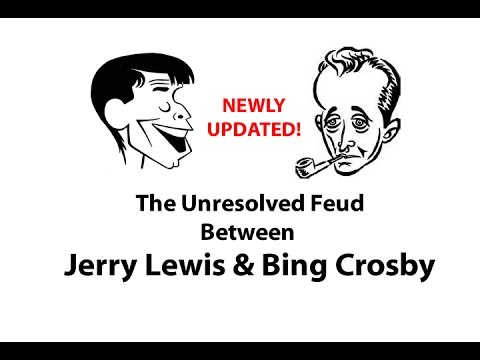





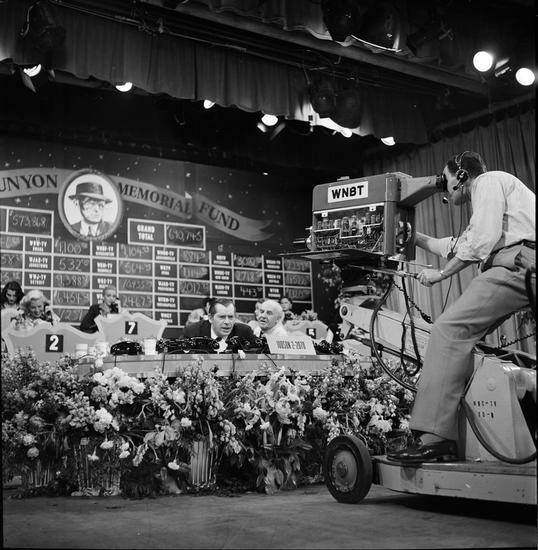

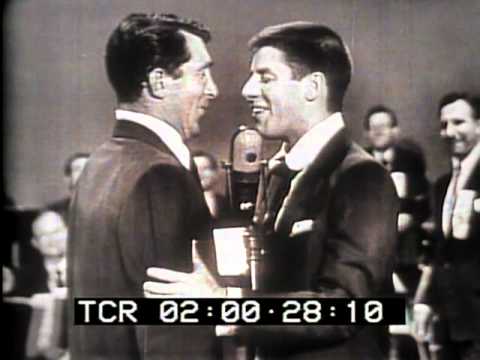

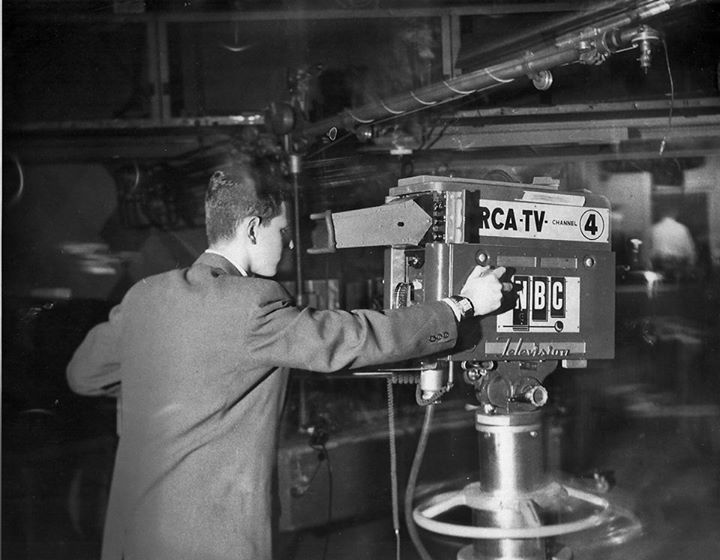



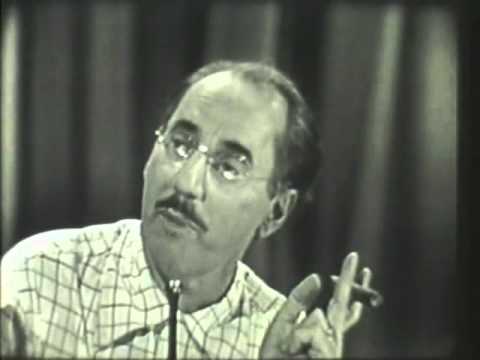

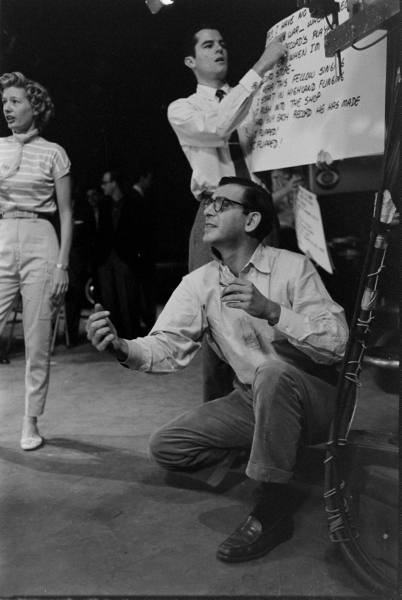



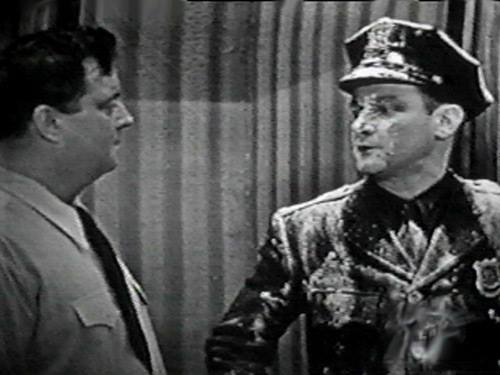

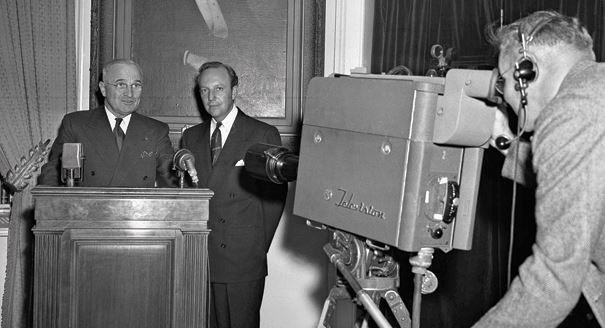



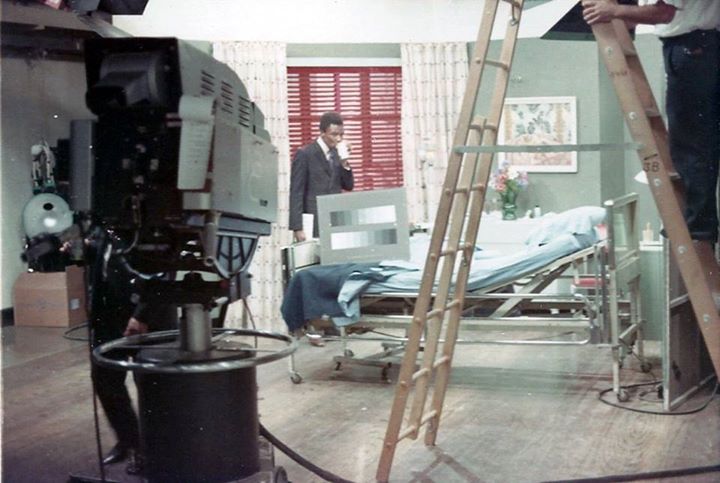

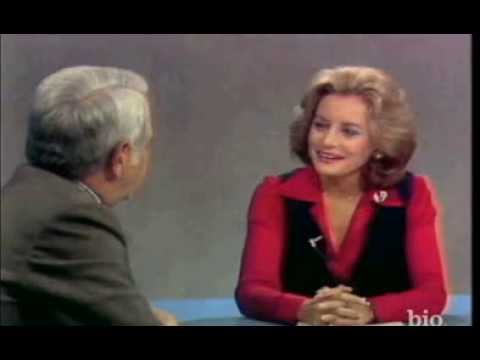

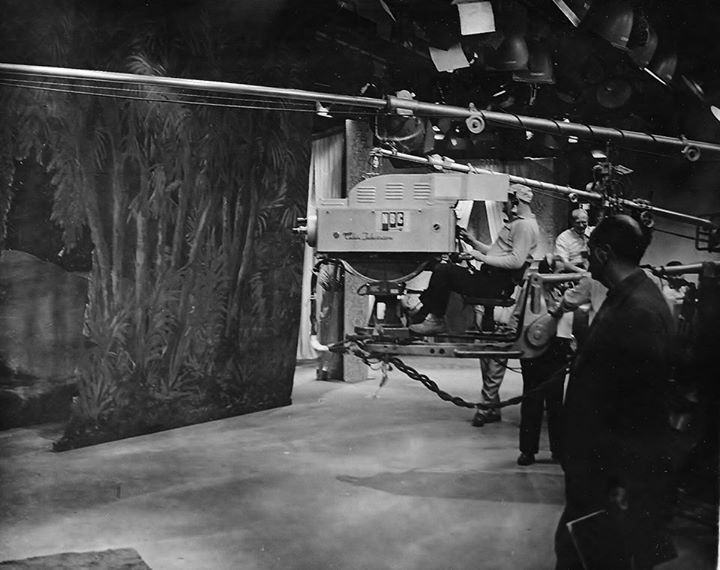



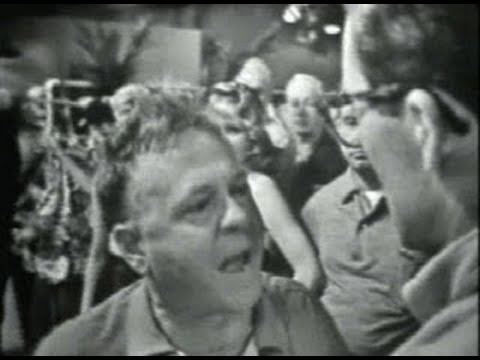



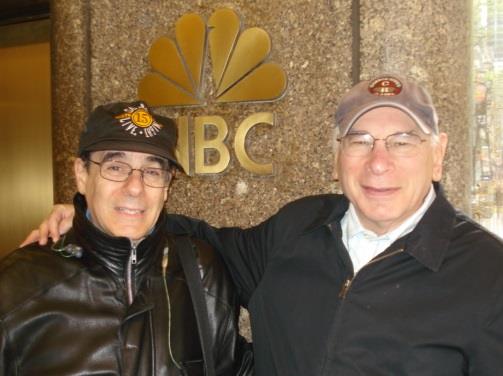

Posts in Category: TV History
Page 56 of 136
« Previous
1
2
3
4
5
6
7
8
9
10
11
12
13
14
15
16
17
18
19
20
21
22
23
24
25
26
27
28
29
30
31
32
33
34
35
36
37
38
39
40
41
42
43
44
45
46
47
48
49
50
51
52
53
54
55
56
57
58
59
60
61
62
63
64
65
66
67
68
69
70
71
72
73
74
75
76
77
78
79
80
81
82
83
84
85
86
87
88
89
90
91
92
93
94
95
96
97
98
99
100
101
102
103
104
105
106
107
108
109
110
111
112
113
114
115
116
117
118
119
120
121
122
123
124
125
126
127
128
129
130
131
132
133
134
135
136
Next » 

The Jerry Lewis – Bing Crosby Feud
On October 8, 2014
- TV History
Follow Up #2…The Jerry Lewis – Bing Crosby Feud
Yesterday, I posted video of Jerry taking over the camera at the 1952 Olympic Telethon hosted by Bob Hope and Bing Crosby. I mentioned that Crosby was avoiding Lewis because he was afraid Jerry would dislodge his hair piece.
Little did I know that that was the start of a huge feud between the two stars! Thanks to João Antonio Franz, here is a short video story on the origin with Jerry Lewis telling the story. Enjoy and share! -Bobby Ellerbee
https://www.youtube.com/watch?v=r0YdQLrR-0Q
NEW EDIT WITH ADDED MATERIAL — In a series of clips, Jerry Lewis recounts what sparked off his decades-long feud with Bing Crosby — which unfortunately was…
‘I Love Lucy’ 3 Headed Monster…Came From ‘Truth Or Consequences’
On October 8, 2014
- TV History
‘I Love Lucy’ 3 Headed Monster…Came From ‘Truth Or Consequences’
In researching the story I posted just before this on the first television game show with a live audience to be shot on film, I came across this interesting fact. The excerpted paragraph below is from ‘I Love Lucy’ editor Dann Cahn on the problem of editing film from 3 cameras and how the solution came from Ralph Edwards’ earlier pioneering efforts in this area.
“The amount of footage overwhelmed editors at the time, and they located a cutting-edge device that had been created for the quiz show ‘Truth Or Consequences’. When it was delivered to Desilu, Cahn called it a “monster” because it wouldn’t fit into the editing room so they put it in the prop room. “It was a Moviola with four heads — three for picture and one for sound,” Cahn told Editors Guild Magazine in 2006.”
This information is sadly from Mr. Cahn’s obituary with is at the link below. -Bobby Ellerbee
http://deadline.com/2012/11/dann-cahn-dead-editor-of-i-love-lucy-multicamera-tv-pioneer-376730/


Historic Revelation! Ralph Edwards Sets The Record Straight!
On October 8, 2014
- TV History
Historic Revelation! Ralph Edwards Sets The Record Straight!
Two days ago, I posted an article from 1950 that claimed ‘You Bet Your Life’ was the first game show to be filmed before a live studio audience. Some had suggested here that ‘Truth Or Consequences’ was the first. I’ve done more research and it seems that Ralph Edwards was indeed the first to use a 3 camera, 35MM system to record his show.
This video is set to start at the point where Edwards describes this process and for the next 12 minutes, goes on to reveal not only the details, but how Desi Arnaz came to him for help with how to shoot ‘I Love Lucy’. For once and for all, this puts to rest the claim by many that ‘I Love Lucy’ was the first to do this.
Photos From The First Ever Network Telethon
On October 7, 2014
- TV History
Speaking Of Telethons…Here Are Photos From The First Ever
After posting the Martin & Lewis video from the 1952 Olympic Telethon, it occurred to me that it’s been a few years since we’ve seen these rare pictures from the first telethon in May of 1949.
Milton Berle hosted the 16 hour event on NBC and raised $100,000 for The Damon Runyon Memorial Cancer Fund. Among the celebrity guests…Dean Martin and Jerry Lewis. I think it’s safe to say that no one in the world has more experience and ability with teletoons than Mr. Lewis. Enjoy and share! -Bobby Ellerbee


More Classic Camera Fun…Jerry Lewis Takes Over…1952
On October 7, 2014
- TV History
More Classic Camera Fun…Jerry Lewis Takes Over…1952
When Jerry walks toward the camera and looks in the lens, you just know something else is about to happen…and it does, just a few seconds later when he takes over the RCA TK30.
This is from the same theater that NBC used for the Hollywood broadcasts of ‘The Colgate Comedy Hour’…The El Capitan Theater on Vine Street. The event was the 1952 Olympic Telethon to raise money for the teams to travel. It was hosted by Hope and Crosby, BUT…Bing would not appear on stage with Lewis! He was afraid Jerry would grab or dislodge his hair piece! Enjoy and share! -Bobby Ellerbee
Why This Is An Interesting Photo For Camera Buffs…
On October 7, 2014
- TV History
Why This Is An Interesting Photo For Camera Buffs…
Over the past few weeks, I’ve posted some photos taken by television veteran Peter Katz. This is Peter behind an RCA TK30 at The Hudson Theater in New York which was home to ‘Tonight’ and ‘The Kate Smith Show’.
There are three things that stick out to me here…the viewfinder hood, the door vents and the RCA meatball and Television badges.
For some reason, RCA never made, or offered a third party movable viewfinder hood for the TK30s. RCA’s were immovable and rigid.
The TK10s had an adjustable hood, but they would not fit on a TK30. CBS made their own and I think this is a custom hood made in the NBC shop.
This is only the second time I have seen this kind of rectangular door vents. As not to detract from this photo, I’ll post the other photo of these vents in the comment section. RCA made a kit with round screen vents…they were installed on each door with 10 rounds at the top and 10 rounds at the bottom. This is an NBC NY modification.
This brings us to the RCA badge placement. These have been moved to accommodate an oversized NBC Chime logo. Usually the RCA meatball and Television badge is about where the chime mallet is. This camera had lot of custom work done on it. To me, that shows a great deal of care and attention to not only the functionality of the camera, but in it’s appearance too.
By the way, we often see the access doors open on network cameras, but not so much at the local station level. That is because the network cameras have a lot more hours on them…the are almost always in use all day long and deep into the night. Enjoy and share! -Bobby Ellerbee
Unknown Production History Of ‘You Bet Your Life’…
On October 6, 2014
- TV History
Unknown Production History Of ‘You Bet Your Life’…
Did you know this was the first television show to be filmed before a live audience? Me either till I read pages 31 and 32 of this August 1952, Television Magazine story.
It’s written by Isidore Lindenbaum who owned Film Craft Productions, the studio that filmed the NBC series for it’s entire run from 1950 till 1960. This is very interesting and even discloses that they used 8 35mm cameras on the show, 4 for the first half hour and 4 for the second half hour. And yes, they shot an hour of film to get a half hour show. I think you’ll also find the sound synchronization process interesting too. There’s a lot of great information here so take a look and share it! -Bobby Ellerbee


October 5, 1950…’You Bet Your Life’ Debuts On NBC + Special Insights
On October 6, 2014
- TV History
October 5, 1950…’You Bet Your Life’ Debuts On NBC + Special Insights
We’re a day late with this, but it was on purpose as this pilot was directed by none other than Ralph Levy, who we just met in the article before this.
This the unaired pilot to the show that was kinescoped around the first of August in 1950 at CBS Columbia Square. Notice it is almost an hour long, yet the radio and TV show were only half hour shows. This is because Marx did so much ad libbing in trying to get contestants to say the “secret word” that each show had to be edited down on audio tape for the radio show and on film for the television show.
Unlike the NBC television show which was on film, this was shot with RCA TK30 television cameras as the radio show was recorded for editing and delayed broadcast, which explains the casual dress for Groucho.
Notice a few things. At the start, we have about 1:45 seconds of video before the start of the radio show. As we go, there are several times we do pickups of intros and extros. and at 51:35, Groucho pitches to Myron Wallace who we all now know as Mike Wallace. The pitch to Wallace was a blank space into which and Elgin Watch radio spot would be added as Wallace had been their spokesman beginning when this show was on ABC radio in 1947.
Director Ralph Levy…A CBS Superstar
On October 6, 2014
- TV History
Director Ralph Levy…A CBS Superstar
You may not know the name, but you know his work. Among other things, Ralph Levy directed the ‘I Love Lucy’ pilot, ‘The Jack Benny Show’, ‘Burns And Allen’ and as we just learned in today’s first article, ‘The Ed Wynn Show’.
A few months back, I posted a story on the vaudeville and radio stars Ole Olsen and Chic Johnson. They were most famous for their hit broadway show and movie called ‘Hellzapoppin’. As it turns out, CBS had tried to bring Olsen and Johnson to television in early 1949 and Ralph Levy was the assistant director. The show turned out to literally be too big for television because Olson and Johnson’s style was to have action not only play out on stage, but going on in the theater at the same time and often overlapping. The show ended after 13 weeks, but immediately after that, Levy was given a show of his own. It was a summer replacement called ‘The 54th Street Revue’ and came from CBS Studio 52 on 54th and Broadway.
Ralph managed to get the first of the shows on the air in only 4 days… an accomplishment that earned him both management’s attention and a reputation for working swiftly and efficiently. That fall, the network asked Levy to move to Los Angeles to direct a new variety series starring radio comedian Ed Wynn. If network TV in New York was just beginning, in Los Angeles it was virtually non-existent…
The Ed Wynn Show, Levy soon discovered, would be the first major network show to originate from Hollywood. It would be shown live on the West Coast every Thursday night at 9PM. A kinescope recording of the show would be made, sent to New York, and played for East Coast and Midwestern stations two weeks later. Such delays were necessary because the transcontinental cable was not yet in place that would allow for national live telecasts to originate on the West Coast.
In late December, Ed’s guests were Lucille Ball and Desi Arnaz and this was the first time Ralph met them. The script that night went out of its way to spotlight 32-year-old Desi, who appeared with Wynn and Ball in a comedy sketch, and even afforded him the opportunity to sing “Babalu.”
A few weeks later, CBS asked Lucy to consider transferring her radio series, ‘My Favorite Husband’, to TV. Levy, meanwhile, had come to be the network’s fair-haired boy in Hollywood…in April, he expanded his duties to include directing the new ‘Alan Young Show’, a weekly half-hour comedy-variety skein starring the young Canadian who today is more remembered for his role ten years later in the sitcom ‘Mr. Ed’.
One of the most successful programs on CBS Radio that season was ‘You Bet Your Life’, starring Groucho Marx. The show’s sponsor was interested in adding a TV version…both CBS and NBC wanted to carry it. When both major networks became interested, a bidding war started. Since Marx was already at CBS, it seemed likely he would stay, but Levy helped with a pilot show. When the dust settled, NBC was the high bidder, but Levy stayed at CBS.
The Ed Wynn Show ended its nine-month run on July 4, 1950, and Ralph headed to Mexico for a much-needed vacation. He had hardly unpacked when an emergency call came from CBS’ Hollywood operations. Levy was asked to come back the next day as George Burns and Gracie Allen had agreed to go on television, and CBS wanted him at the first production meeting.
A pilot was prepared and quickly sold to Carnation Milk Company and ‘The Burns & Allen Show’ was scheduled for a fall premiere. George was afraid to take on a weekly show all at once, particularly one that was to be done live, so CBS agreed to air it on an alternate-week basis.
Making his life even more interesting was the fact that George Burns’ best friend, Jack Benny, was toying with the idea of getting into television himself. Naturally, he wanted Ralph to direct. But Benny was even more shy about TV than George and Gracie, and agreed to do only four half-hour specials that first 1950-51 season.
Lucy and Desi Arnaz, meanwhile, spent the summer of 1950 performing a comedy act in vaudeville theatres across the country, and by late fall had convinced CBS to let them try a new TV series together. Lucy’s radio writers, Jess Oppenheimer, Bob Carroll Jr., and Madelyn Pugh went to work to create the format. Ralph Levy was asked to direct.
The pilot was filmed on Friday evening, March 2, 1951 (Desi’s 34th birthday) in Studio A of CBS’ Columbia Square headquarters in Hollywood. It was the same stage used for the Wynn Show a year earlier. The show was shot live with a studio audience in attendance, as most TV shows were being done then. There was no tape yet. The images were recorded on film from a TV screen, providing us with the required kinescope.Levy, CBS’s first choice to direct, begged off: he knew he already had his hands full.
In 1953, Ralph retired from ‘Burns & Allen’, and with ‘The Alan Young Show’ ceasing production, he concentrated his energies on the now bi-weekly Jack Benny program. He remained at Benny’s side another four seasons, then returned in 1959 to helm two hour long Benny specials. For these shows, he won his first Emmy Award. Ralph won a second Emmy two years later for first ‘Bob Newhart Show’, a weekly half-hour of stand-up comedy and variety.
When filmed sitcoms became the order of the day, Levy adapted: he directed the pilots of ‘The Beverly Hillbillies’ and ‘Green Acres’, and two seasons of ‘Petticoat Junction’, all for his friend Paul Henning, one of George Burns’ writers who had since become a successful producer.
Ralph later attempted to do dramas…programs like ‘Hawaii Five-O’ and feature films, but somehow, his heart was not in these projects: he missed the live audiences that early television and the theatre had provided. The thrill of “opening night” was missing.
Levy spent several years in England in the 1970s, working for BBC Television, and taught TV production classes at Cal State Northridge and Loyola Marymount University. Levy relocated to Santa Fe, New Mexico in 1981 and passed away October 15, 2001 at his home…he was 81. Enjoy and share! -Bobby Ellerbee


You’ll Be Surprised To See Who This Lady Is!
On October 5, 2014
- TV History
Just For Fun…You’ll Be Surprised To See Who This Lady Is
This was a special edition of ‘I’ve Got A Secret’ from 1958 that featured family members of famous stars. You will be shocked and wildly surprised by who the lady is. The video is cued to start at the head of her segment, but if you skip around here and especially at the front, you’ll see some of CBS Studio 59 in the background. Enjoy and share! -Bobby Ellerbee
http://youtu.be/RCKQvZWy8r0?t=7m11s
A 1958 episode of “I’ve Got a Secret”, with host Garry Moore and panelists Bill Cullen, Jayne Meadows, Henry Morgan, and Betsy Palmer, on which talented but …
October 5, 1951…’The Honeymooners’ Debut…Ultra Rare Video
On October 5, 2014
- TV History, Viewseum
This is the first time America met Ralph and Alice Kramden…it was October 5, 1951 on Dumont’s “Cavalcade Of Stars”.
In July of 1950, Jackie Gleason took over as host of Dumont’s ‘Cavalcade Of Stars’. The original hosts were Jack Carter and then Jerry Lester with Morey Amsterdam filling in occasionally. By the middle of ’51 Gleason and his writing staff developed an idea for a sketch based on the popular radio show ‘The Bickersons’.
Gleason wanted a realistic portrayal of life for a poor husband and wife living in Brooklyn. The couple would fight almost constantly, but ultimately show their love for each other. After rejecting titles like The Beast, The Lovers, and The Couple Next Door, Gleason and his staff settled on ‘The Honeymooners’ for the name of the new sketch.
The debut sketch on October 5, 1951 was six-minutes and the tone of these early sketches was much darker than the later series, with Ralph exhibiting extreme bitterness and frustration with his marriage to an equally bitter and argumentative middle-aged woman. By the way, Kelton was nine years older than Gleason.
Due in part to the success of these sketches, ‘Cavalcade of Stars’ became a huge success for DuMont. It increased its audience share from nine to 25 percent. Gleason’s contract with DuMont expired in the summer of 1952, and the financially struggling network was unable to re-sign him. That’s when he moved to CBS and ‘The Jackie Gleason Show’ debuted September 20, 1952 from CBS Studio 50, now known as The Ed Sullivan Theater. The rest as they say is history! Enjoy and SHARE! -Bobby Ellerbee
October 5, 1947…First Televised Presidential White House Address
On October 5, 2014
- TV History
October 5, 1947…First Televised Presidential White House Address
On this day in 1947, President Harry S. Truman delivered the first televised presidential address from the White House. As far as we know, this was the first White House pool feed and was handled by NBC.
Television was still in its infancy and there were only about 44,000 TV sets in U.S. homes, concentrated in a few cities, compared with some 40 million radios.
Though Truman pioneered the now-familiar ritual of a White House telecast to the nation, he was not the first president to appear on television. President Franklin Roosevelt was telecast from the New York World’s Fair on April 30, 1939, but FDR’s remarks on the fair’s opening day were seen only on receivers at the fairgrounds and at Radio City Music Hall, in midtown Manhattan. The next day, TV sets went on sale to the public, as RCA and NBC, began broadcasting on a daily basis. Telecasts were then largely suspended for the duration of World War II.
In his speech, Truman called on Americans to conserve food to help hard-pressed Europeans, still recovering from the devastation caused by the war and threatened with a massive winter famine. He asked the agricultural industry and distillers to reduce grain use. He asked Americans to forgo eating meat on Tuesdays and eggs and poultry on Thursdays and to consume one fewer slice of bread every day. The food-saving initiative was short-lived, however, as the Marshall Plan spurred Western Europe’s economic revitalization. Enjoy and share! -Bobby Ellerbee


The Perils Of Covering Live Sports…A Knockout Blow
On October 5, 2014
- TV History
The Perils Of Covering Live Sports…A Knockout Blow
Many will tell you soccer is a kinder and gentler game than American football, but not for this cameraman. These low angle sideline cameras give viewers a great look at the action, but this is not the first time these run ins have happened. Enjoy and share! -Bobby Ellerbee
Hoffenheim captain Andreas Beck goes over the hoardings in his side’s game against Mainz 05 and spectacularly takes out a cameraman, who temporarily lost con…
EOAG Exclusive Photos…’The Doctors’, NBC Studio 3B
On October 5, 2014
- TV History
EOAG Exclusive Photos…’The Doctors’, NBC Studio 3B
Thanks to Bob Batsche, we have these these two color photos that he took on the set in 3B, and thanks to Chuck Snitchler, we have a shot of the slate from the first color episode which would air December 4, 1967, but was taped almost a month before.
On April 1, 1963, ‘The Doctors’ replaced Merv Griffin’s first daytime talk show in the 2:30 timeslot, where it remained for nearly sixteen years. This is an extraordinary feat considering its competition, which included long-running favorites such as ‘House Party with Art Linkletter’ on CBS and ABC’s ‘Dating Game’. On occasion, it was also up against one of the longest-running soap operas in television history,’The Guiding Light’ on CBS.
In a move the proved fatal, NBC moved ‘The Doctors’ to 12 noon eastern on March 29, 1982. The show aired its final episode on December 31, 1982, some three months before it would have celebrated its 20th anniversary on NBC.
Frankly, I am stunned that NBC, or any network, would offer any programing at noon on a weekday in the 80s. I grew up in the Atlanta area and as best I remember, there was always a noon news show. In the early 60s, they were not half hour shows, but by the mid 70s they were. Somewhere, I have seen a mid 70s CBS daytime schedule that leaves open the 12 – 12:30 block for local programing. I wonder why NBC didn’t do that? Enjoy and share! -Bobby Ellerbee


October 4, 1976…Barbara Walters Co Anchors ABC Evening News
On October 4, 2014
- TV History
October 4, 1976…Barbara Walters Co Anchors ABC Evening News
38 years ago today, Walters became the first female anchor for a US network evening news program. On her move from NBC’s ‘Today’ show, she was teamed with ABC anchorman Harry Reasoner and the sparks immediately started to fly!
This short clip goes directly to the heart of the conflict and includes footage from that first night. Morbid curiosity was the main reason most viewers tuned in. Sad but true. Enjoy and Share! -Bobby Ellerbee
Barbara Walters interviews with Harry Smith and reveals her early ambitions of becoming an actress.
Exclusive New Photos From NBC Brooklyn…4 of 4
On October 4, 2014
- TV History
Exclusive New Photos From NBC Brooklyn…4 of 4
Thanks to Peter Katz, here is another of four photos taken on the set of ‘Amahl And The Night Visitors’ at NBC Brooklyn.
This was first performed on December 24, 1951 in Studio 8H where it was broadcast live as the debut production of the ‘Hallmark Hall of Fame’. It was the first opera specifically composed for television in America and became a holiday staple at NBC.
For its first three telecasts, the program had been presented in black-and-white, but beginning in 1953, it was telecast in color. Because it was an opera, it later began to be scheduled as an afternoon television program, rather than shown in prime time as had been done in its first few telecasts. For years, Amahl was presented live annually, but in 1963 it was videotaped, but accidentally erased and redone in 1964. This series of four photos were taken in 1954 during the rehearsals at NBC Brooklyn, shortly after it went into service on November 12, 1954.
Thanks to Peter Katz for sharing these with us. Enjoy and share! – Bobby Ellerbee


October 4, 1954 – ‘December Bride’ Debuted On CBS
On October 4, 2014
- TV History
October 4, 1954 – ‘December Bride’ Debuted On CBS
Spring Byington starred not only in the television version, but in the CBS Radio version as well which began in 1952 with a cast of stars that included Hal March and Doris Singleton as her daughter and husband, and Hans Conrad as neighbor Pete Potter.
‘December Bride’ was produced by Desilu and Desi Arnaz personally chose the cast. Desi liked all of the radio actors and all were eventually guests on ‘I Love Lucy’, but he wanted Byington to shine in her own light, so he chose a new cast of relatively unknown actors.
One interesting casting choice Arnaz made to hire Harry Morgan as neighbor, Pete Potter…this was Morgan’s first job in television. At the end of this show’s successful six year run, Morgan’s character was spun off into ‘Pete And Gladys’. Enjoy and Share! -Bobby Ellerbee
https://www.youtube.com/watch?v=yjQRcyTWUZg
Miniepisode of “December Bride” “The Grandfather Clock”


October 4, 1956…’Playhouse 90′ Debuts on CBS
On October 4, 2014
- TV History, Viewseum
October 4, 1956…’Playhouse 90′ Debuts on CBS
Thursday nights at 9:30 eastern, television’s most distinguished dramatic anthology series was anxiously awaited in most American living rooms. Below is a full episode of the show that you will want to see...it’s full of RCA TK11s and many Television City studio shots all the way through. This is “The Comedian” starring Mickey Rooney and Mel Torme. It was written by Rod Serling and directed by the great John Frankenheimer and live ran on February 14, 1957. This is a kinescope copy of Season 1’s, Episode 20.
From it’s inception in 1956, everyone knew that this 90 minute weekly presentation was a big bite for any production schedule…even the new CBS Television City facility. So, that first year, three out of four episodes were done live with every fourth episode being done on film at another location.
Remember, the worldwide debut of video tape was in April of 1956 and it took nearly a year to get some machines built and in use, but soon after CBS TVC got theirs, they began to experiment with using them on ‘Playhouse 90’. Although the were live to tape, with no editing, having this ability helped a lot, and in early ’57, the show moved completely to videotape.
The move to tape allowed the show to keep it’s live look and best of all, it allowed them to break the 90 minute show into segments and gave them the ability to retake scenes and move sets without the urgency of the live clock against them.
In the final ’59 – ’60 season, the pressures and cost of this truly ambitious effort proved overwhelming and ‘Playhouse 90’ cut back to alternate weeks and rotated with ‘The Big Party’, which was a 90 minute celebrity talk and variety show. Enjoy and Share! -Bobby Ellerbee
1944 RCA Television Milestone Ad
On October 3, 2014
- TV History
Just For Fun…1944 RCA Television Milestone Ad
I thought you may find this interesting. The cameras in the photo are the pre war Orthicon cameras and this was most likely taken at Madison Square Gardens where RCA sponsored and broadcast several events for servicemen. The USO shows that RCA cosponsored were broadcast for wounded soldiers in the NY area hospitals that were watching on RCA donated receivers. Enjoy and share! -Bobby Ellerbee
An Exclusive Eyewitness Account…Billy Crystal & The Debut Of SNL
On October 3, 2014
- TV History
An Exclusive Eyewitness Account…Billy Crystal & The Debut Of SNL
Last week, with the debut of the 40th season of ‘Saturday Night Live’, we looked at the history of the show’s missed start date and the first episode. As you know, Billy Crystal was scheduled to appear, but he didn’t. You are about to learn the real story of why he didn’t from someone who was there…Joel Spector, who was on the audio crew for the first 17 years of SNL.
Many, including me, were curious about how this happened…was it a last minute thing or did it come earlier in the week? In later years, Billy had talked about the disappointment of being bumped but thanks to Joel, we’ll hear what really happened. Here is his account…
“This is the real story. Billy did indeed appear in the dress rehearsal and got big laughs. I was at the post-dress rehearsal production meeting. For this week only, every staff and crew member attended this meeting, held right in the middle of the studio. There were three “new young comedians” scheduled to appear that week, in addition to host George Carlin. They were Andy Kaufman, Billy Crystal and Valri Bromfeld. Lorne announced that the show was very long and that only two of the three new comedians could be on the air show: Andy (with two spots) worked to recorded music, “which couldn’t be cut.”
“Billy was set to do his “Late Show” routine, in which he did all of he sounds for the typical late movie show on a local station, complete with badly spliced film hiccups. He said that he had been doing this routine for some time and that it had already been refined to be “just right.” “I understand that this might rule me out,” he said.”
“Valri piped up: “I can cut down my piece…no problem.” Lorne then wished Billy well and promised him a spot during the next few weeks. He then was cast on “Soap” and became a big star. We didn’t see him on SNL until 1984. Andy went on to the comedy stratosphere until his untimely demise. Valri did her shortened and not very funny routine and then resumed her career as a comic actor and writer.”
– Joel Spector
To follow up on Joel’s account, as Lorne had promised, Billy returned on April 17, 1976 on Season 1’s 17th Episode which was hosted by President Ford’s Press Secretary, Ron Nessen with musical guest Patti Smith.
Thanks to Joel, we now know that it was only after the dress rehearsal that Crystal was cut. Till now, that part had never been known. Many thanks to Joel for this missing piece of history and to the many that share similar first hand information on this page.
In the photo below we see our friends Joel Spector (L) and Gady Reinhold (R)…friends since childhood and television veterans extraordinaire. Joel joined NBC in 1965 and Gady joined CBS a year later. Both have been a tremendous help to this site and their passion for television’s history and friendship is greatly appreciated! Enjoy and Share! – Bobby Ellerbee
Page 56 of 136
« Previous
1
2
3
4
5
6
7
8
9
10
11
12
13
14
15
16
17
18
19
20
21
22
23
24
25
26
27
28
29
30
31
32
33
34
35
36
37
38
39
40
41
42
43
44
45
46
47
48
49
50
51
52
53
54
55
56
57
58
59
60
61
62
63
64
65
66
67
68
69
70
71
72
73
74
75
76
77
78
79
80
81
82
83
84
85
86
87
88
89
90
91
92
93
94
95
96
97
98
99
100
101
102
103
104
105
106
107
108
109
110
111
112
113
114
115
116
117
118
119
120
121
122
123
124
125
126
127
128
129
130
131
132
133
134
135
136
Next »